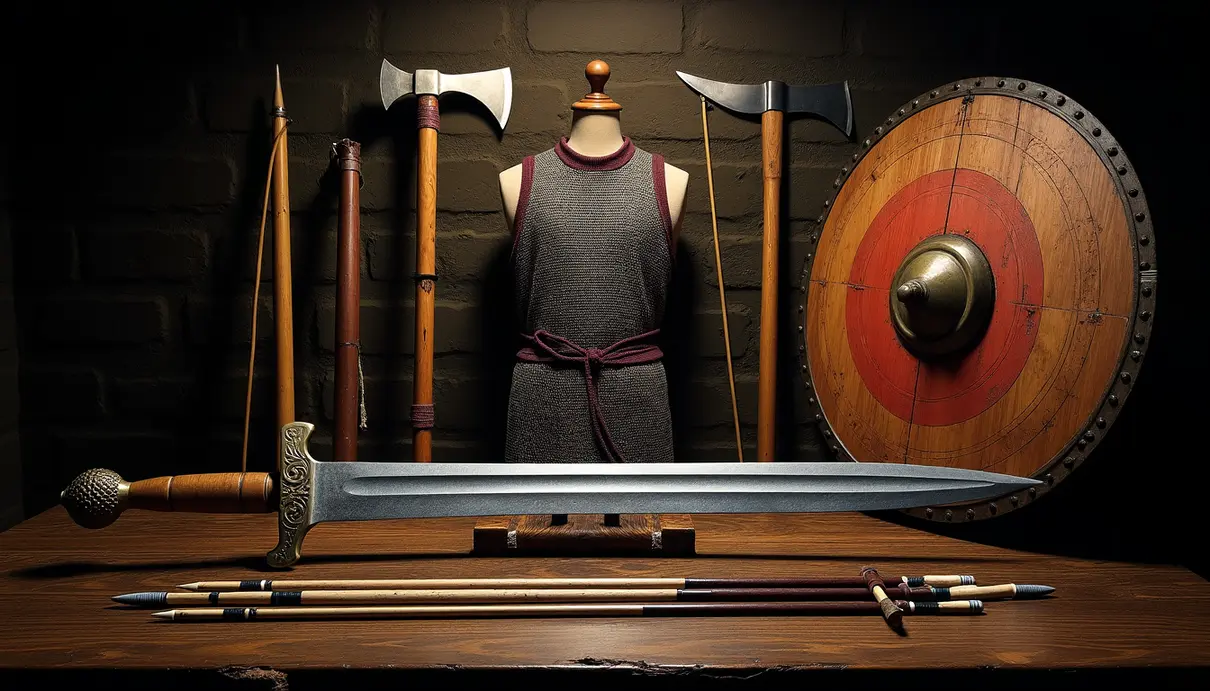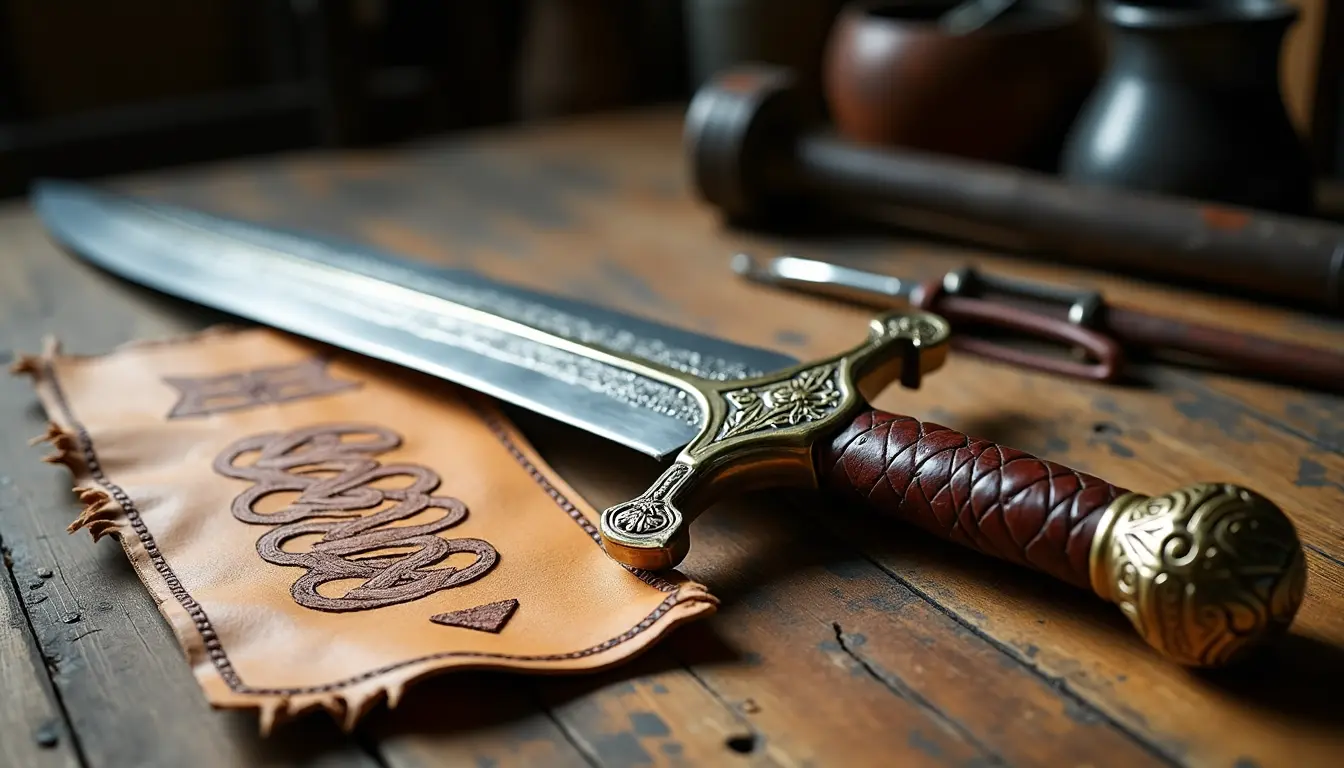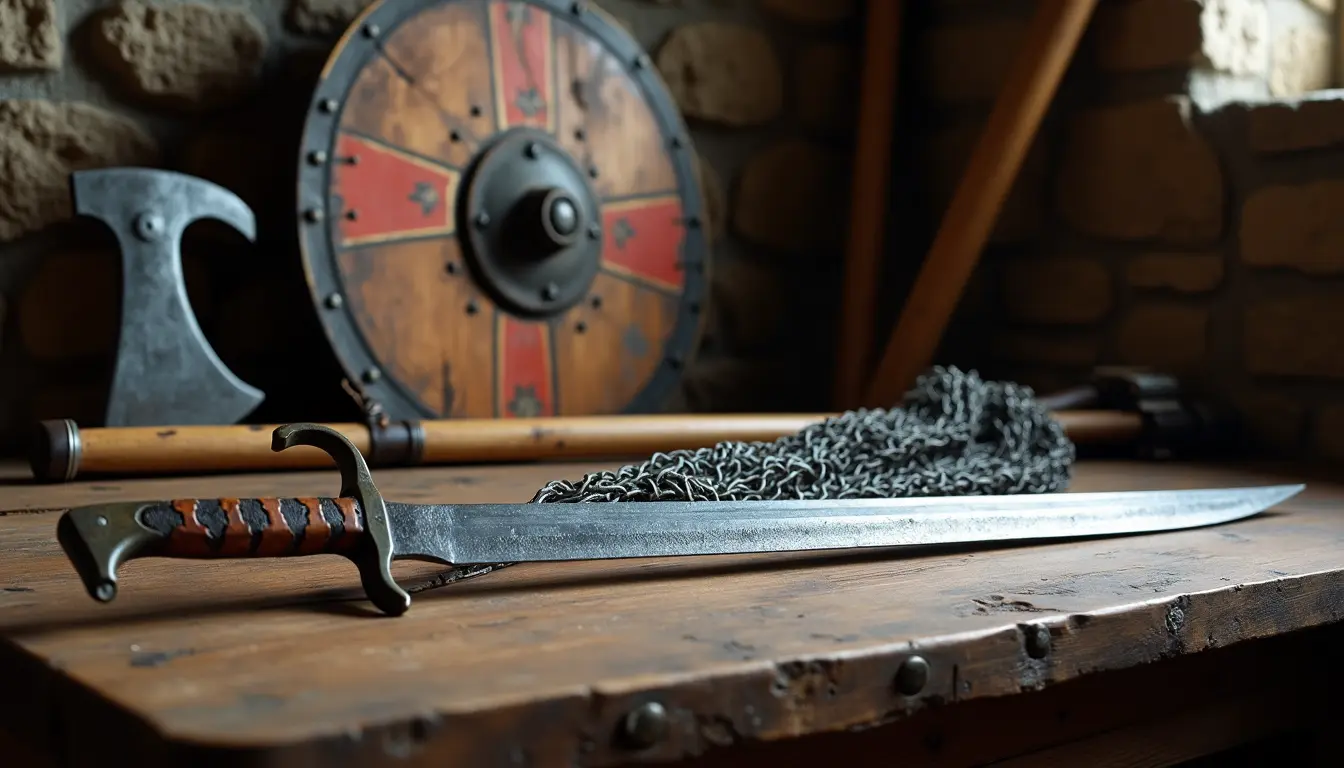

Ancient Techniques for Modern Makers
Crafting a Viking sword was no simple task – it required months of meticulous work and expertise. The Viking battle craft was not just about creating weapons, but also about showcasing technical sophistication as an art form. Skilled blacksmiths mastered advanced techniques like pattern welding to create superior blades by layering different types of metal. The Ulfberht swords made with high-carbon steel and the versatile Danish ax are just a few examples of the craftsmanship that rivaled modern bladesmithing techniques.
In this article, we will delve into the ancient techniques used by Viking craftsmen and how you can apply them in your own workshop. From material selection to traditional forging methods, we will explore the legendary craftsmanship behind Viking weapons and the beauty and deadliness they possessed.
Understanding Viking Battle Craft
Viking-age Scandinavia’s battle craft was more than just weapon-making – it represented a complex system of social rights and responsibilities. Nearly every free Norse man was required to own weapons and could carry them anywhere. This was a society that valued law and honor above all else, with weapons serving as tools to maintain social order and personal dignity.
Historical Background
The Viking Age, which lasted from the late 8th to mid-11th century, saw weapons become central to daily life. Contrary to popular belief, the Norse people were not lawless raiders but individuals who placed a high value on law and honor. Weapons were symbols of status and wealth, with swords costing as much as a dozen milk cows.
Types of Viking Weapons
Viking warriors had a variety of weapons in their arsenal, including swords, axes, shields, and spears. Swords typically measured between 90-95cm in length and weighed just over 1kg. Axes evolved from simple farm tools into sophisticated weapons, with early blades measuring 8-16cm and later growing to 23-46cm. Bows and arrows also played a vital role in Viking warfare.
Role in Norse Society
Weapons were powerful status symbols in Norse culture, with the quality and decoration of a weapon reflecting its owner’s social standing and wealth. Weapon ownership was heavily regulated, with strict rules surrounding who could carry weapons. Mastery of battle craft went beyond mere function, with pattern-welding techniques creating strong and flexible blades that bore the marks of master smiths.
Planning Your Project
Starting a Viking battle craft project requires careful planning and research. Choosing the right piece to start with is crucial, whether it be a sword or an ax. Dimensions, materials, and design elements all need to be considered before beginning the project. Researching historical examples and modern recreations is essential to ensure authenticity.
Metal Selection and Preparation
Metal selection is a critical aspect of Viking battle craft excellence. Vikings worked with bloomery iron and employed techniques like pattern welding to create blades with varying carbon content. Testing the quality of the metal was crucial, with carbon content playing a significant role in determining the blade’s properties.
Basic Forging Methods
Forging was central to Viking battle craft, with blacksmiths transforming raw metal into legendary weapons through careful control of fire, force, and cooling. Fire management, hammering techniques, and cooling processes all played a role in shaping the metal into the desired form. Pattern welding was a sophisticated method used to create blades with enhanced strength and flexibility.
Finishing Techniques
The finishing process in Viking battle craft required exceptional skill and precision. Surface treatment involved meticulous preparation and the use of specialized polishing materials to create fine, even finishes. Edge hardening was the final step in weapon crafting, involving carburization, quenching, and selective tempering to create a hard outer layer while maintaining a tough core.
In conclusion, Viking battle craft is a blend of artistry and engineering that still captivates modern makers. The ancient techniques used by Viking craftsmen require skill, patience, and deep material knowledge to recreate. Starting with simpler projects and gradually working towards more complex pieces can help build core skills. Viking weapon crafting is not just about creating weapons – it’s about carrying on a tradition of excellence that combines technical precision with artistic vision.







